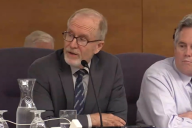You have /5 articles left.
Sign up for a free account or log in.
Language can be beautiful, especially for the marketer. It can persuade, inspire, inform, illuminate, challenge, intrigue, motivate and stay in the audience’s mind well beyond the conclusion of a campaign, landing page, ad, or social post, if wielded with deftness.
It can also confound, confuse, dilute, disappoint, and frustrate — particularly when language gets in the way of information, intent, meaning, and clarity. And while there are a multitude of reasons this happens (there are, after all, somewhere between 6,500 -7,000 languages in the world and countless ways to use language), marketers should strive to use language in ways that give their audiences what they need.
That’s not always a simple prospect in Higher Education, as the language and nature of academia presents challenges, all compounded by a fiercely competitive industry that demands marketers find a balance between scholarly and sexy; accurate and interesting; intellectual and accessible; unique and familiar. This while earning the attention and interest of many different audiences, many of whom prefer texting, social media and emoji to essays and even *gasp* blog posts.
Still, marketers don’t need to sacrifice sophistication — quite the opposite. To quote Albert Einstein, “If you can't explain it simply, you don't understand it well enough.”
Audience First
Good marketing considers audience above all else. Language should not only demonstrate an understanding of the audience’s needs, but also respect how much or how little the audience knows about your institution (or industry, program, initiative, etc.). It’s often helpful to develop representative use cases that address a few different starting points. Think big picture. Some prospective students will understand the distinction between colleges and universities — many will not, nor will they care very much unless you can make them. The same might be true for majors, minors, and concentrations; internships and co-ops or advisors, mentors and counselors. Consider (and eliminate) all the inferences and associations that could be creating obstacles for audiences.
Junk Jargon and Internal Acronyms
There are plenty of words, phrases and acronyms that mean a lot to higher ed practitioners that also afford a certain efficiency in describing details and differences. And, though it’s not unique to higher ed, we’re creating new phrases all the time as we seek to clarify and ultimately, differentiate. Acronyms emerge, burying the understandable under the provincial, often at the expense of the audience. Online especially, audiences won’t spend time seeking additional context or unpacking linguistic subtleties in search of deep meaning — they’ll simply move on to something that doesn’t require a disproportionate amount of energy to comprehend. Search engines and social media can offer excellent insight into what audiences are actually looking for and how they describe it, along with emerging trends. Clever titles imbued with etymological significance may well have a role for your institution, but meaning is harder to discern for external audiences just looking for study abroad information, career options or where they might live on campus.
Metaphors Mean More
Sometimes, things aren’t easy to explain, especially when it comes to academia, with its curricula, pedagogies, endowments, tenure-tracks, adjuncts and a litany of other industry-specific things. Add to that the deep expertise and complex topics faculty tackle, and describing what we do in higher education and why it matters can be daunting. Using a metaphor or analogy that starts with something already familiar to your audience can go a long way to teaching your audience what to look for. Images and videos can work here to offer useful context. The goal should be to lead audiences at a comfortable pace toward the depth of information you want to convey, easing them closer and closer toward understanding. For a little inspiration, there are plenty of posts on the reddit subgroup Explain Like I’m Five that do an excellent job breaking down complicated topics into simple explanations.
Marketers navigating the complexities of language and context have to put their audiences before every other consideration to be effective. Don’t spend your time trying to sound smart. Be smart in how you sound.
Tim Jones in the Chief Communications and Integrated Marketing Officer at Beloit College in Wisconsin.








